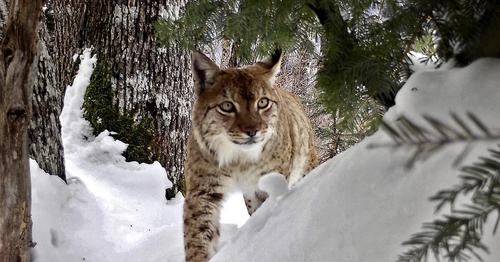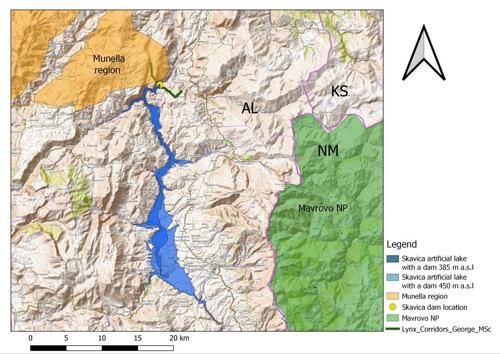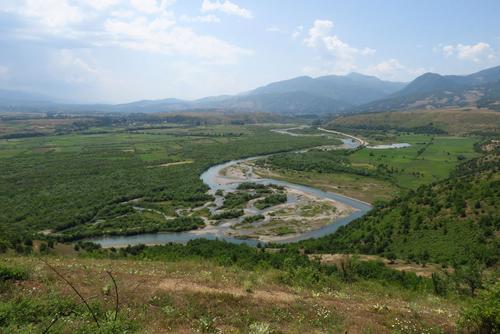The Bureau of the Convention recently accepted a new complaint and urged the Albanian authorities to not develop projects which may negatively affect habitats and species.

Camera-trap photo of a wild Balkan lynx.
© ERA
Skavica dam location, expected flooding with two different dam heights and the most important corridor for the Balkan lynx.
© Balkan Lynx Recovery Programme
The Skavica dam has already been in the spotlight in Albania and beyond for more than two years. Local communities have been protesting against the planned flooding of 41 villages in the Dibra valley and damage to their livelihoods.
And while the Environmental and Social Impact Assessment of the dam prepared by Bechtel has still not been published, the project has suffered a major blow – the Bern Convention on the Protection of European Wildlife and Natural Habitats has decided to accept a new complaint filed by Earth Law Center – USA & Earth Thrive – UK, on behalf of several Albanian groups: Opposition to Skavica Dam-OSD, Group of Rural Activists of Dibra-GARD, North Green Association, and GLV Integrimi.
The Bureau of the Convention, in its report published this month, was
‘concerned with the plans for developing the Skavica hydropower plant (HPP) on the Black Drin River, which may affect a possible candidate Emerald Network site, numerous protected species from the Convention’s appendices and resolutions, notably the critically endangered Balkan Lynx and its migratory corridors.’
The decision of the Bureau is very important as it gives a clear signal to development finance institutions and commercial banks that the Skavica project is a highly risky investment. The US Development Finance Corporation, UK Export Finance and HSBC have all been mentioned by the Albanian government as possible lenders to finance the ever-rising costs of the dam, though none of them have confirmed this.
Besides all the social impacts, Skavica could lead to the extinction of one of the rarest cats in Europe by completely isolating the last two reproducing population nuclei of the Balkan lynx – in Mavrovo National Park (North Macedonia) and on Munella mountain (Albania). The dam would be located on the only corridor that links the two population nuclei.
Interestingly, as the Bureau underlines,
‘Albania had been one of main proponents for listing the Balkan Lynx as a strictly protected species in the Convention on Migratory Species appendices, and yet this project clearly seemed to contradict this good initiative, and the work of the Balkan Lynx Recovery Programme.’
The aim of the programme is to restore a viable population of the Balkan lynx by reducing its main threats: illegal killing of lynx and prey species, habitat loss and fragmentation, unsustainable hunting and forestry systems.
With fewer than 30 Balkan lynx remaining in the wild, any further isolation of the populations would lead to inbreeding, reduced genetic diversity and higher risks from illegal killing and the construction of the dam would lead to habitat loss.
Last but not least, the Bureau accepts that the Black Drin river should be protected in the Emerald Network, the network of Areas of Special Conservation Interest launched by the Council of Europe in 1989 to ensure the long-term survival of species and habitats of European importance.
The upper Black Drin, the last remaining free-flowing part of the Drin, was proposed by scientists and NGOs as one of the 88 priority river stretches to be included in the Emerald Network in Western Balkans. The list of rivers results from the Emerald Green seminar organised by CEE Bankwatch Network in December 2022, where participants provided scientific data on fish species and habitats.
The Bern Convention’s preliminary findings come as yet another confirmation that Albania should stop focusing on the Skavica plant. Instead, it should protect the upper Black Drin and concentrate on reversing its over-dependence on climate-vulnerable hydropower. Carefully-sited solar and wind, together with increased use of heat pumps and solar thermal for heating, can help the country diversify without resorting to the use of fossil fuels for power and heat generation.


